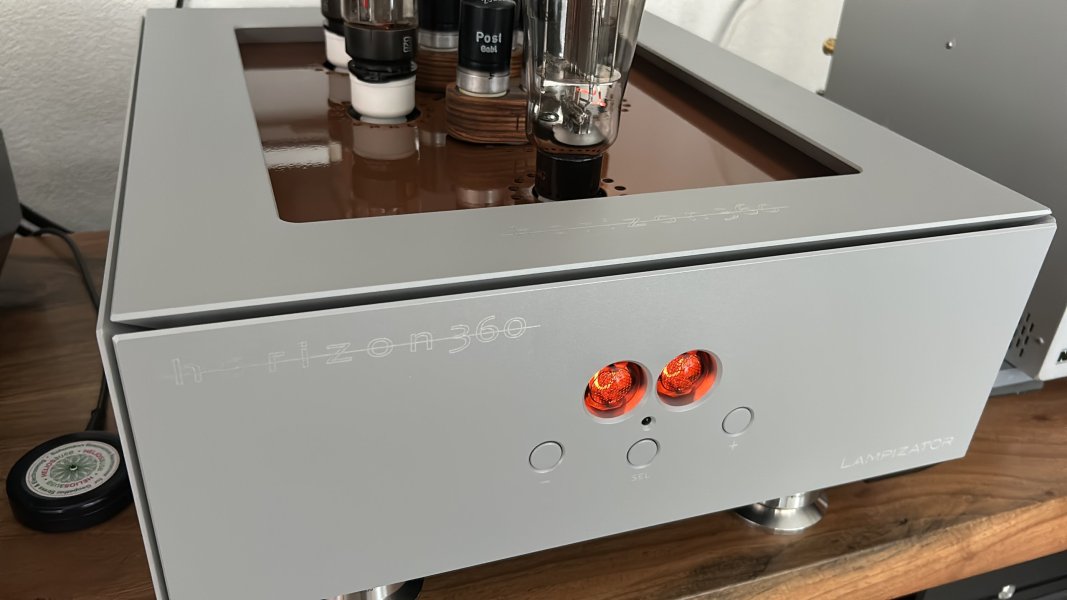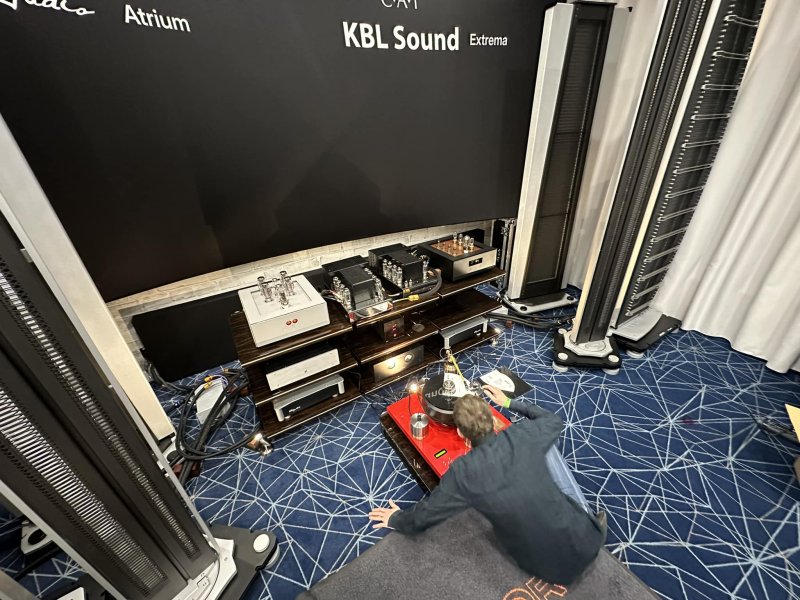I’m astonished it took so long for anyone to bring up this critical point. Every audiophile has known for years that when comparators are made between 2 conditions, the listening level must be absolutely equal or the louder option will always have a sonic advantage, even if the difference is 0.5dB. I thought it was foolish for anyone to state 63 sounded better than anything without doing the proper control for volume differences as Lukasz stated. If you want to do the comparison correctly, when you turn the H down to anything other than 63, you must compensate by turning your preamp up commensurately to assure the SPLs are identical between the two conditions. If you don’t do this, you are probably fooling yourself in the conclusions you draw from any comparison.
There is perhaps, another way to assess the contribution of the resistor ladder VC in the Horizon which is to use a comparator against another source in the following way. I use an LP that has reference caliber sonics as a comparator. Let’s say it’s Reiner’s Scheherezade for example. Play a passage at your usual listening level and give it the arbitrary score of “100” or to make it more tangible, call it “a dollar”. Now play the identical piece through your H (or H360) and server and adjust the volume to be equal by setting the H at 63 and the preamp at whatever it needs to be to achieve the identical volume as your analog source. Is the resultant sound still “100”? Let’s say it’s not but it’s close. Call it 95 cents (an arbitrary number for the moment but useful for this purpose). What’s nice is that you should able to queue up the LP so that when it starts, you can hit play on your digital rig to get an instant A/B comparisons this way with a seamless music passage.
Now, turn the H down to any number. In my case, it would be 49 so the digital and analog SLP levels are identical with the same preamp gain on my Soulution 727. Now, do the same comparison. Start the LP and the digital at the same time, and do the same A/B comparison. This method has the advantage of not having to change your preamp volume as you are now using the H resistor ladder to make the volumes identical. When you do the same A/B comparison, is the value of the digital signal still a 95? Or is it different? (Could be a 93, (might be a 97 or even 102! - doubtful but who knows?) What this method allows is that the sonic merit of bypassing the H resistor ladder vs using a single resistor (to equate volume) can be assessed quite easily. It’s not perfect as a commensurate adjustment in preamp volume is also necessary if you use the H at 63 (whereas no change in preamp level is necessary by matching volume by attenuating the H (to 49 in my case). To do this indirect comparison method best, its useful to have a second pair of hands adjust the H and your preamp simultaneously when you make the switch. But the advantage of being able to go back and forth between your LP and digital essentially instantly with the identical music is nonetheless a very useful comparator. It is not however a true single variable experiment due to the requisite change in preamp volume likely needed when you run the H at 63, but still it’s a very useful, especially when done blinded.
What did I find when doing this? To be honest, I always preferred the H at 63 slightly even when I adjusted for gain using my 727 preamp. To put this into numbers, I concluded that if my analog source was worth a dollar, the digital source with H at 63 and preamp volume lowered was about 96 cents. With the H at 49 (so no adjustment is necessary using the preamp gain, I would say the value was about 95 cents. It would be wrong to conclude that the only reason for this conclusion is solely due to the addition of a single resistor in the H resistor ladder since as we said one is adjusting the preamp volume as well using this method. But is it a useful comparison method nonetheless? Try it for yourself and see. Splitting hairs? Yes. A useful exercise? Maybe. A waste of time? Probably, since the differences you will probably find are nominal and have little effect on musical enjoyment.
However, when all is said and done, the level you set the H may have far more relevance than just SQ minutiae for the following reason. If you set the H at 63 and you are playing an LP at a realistic level, and you switch to digital without lowering your preamp volume, you just might launch a speaker driver right out of the cabinet. In other words, lowering the H volume to say, 49 in my case, so that the levels are identical when switching from LP to digital, is a safety feature to avoid large volume surprises when switching sources that might be harmful. That alone is a very valid consideration. Since I switch between analog and digital sources often, I keep the H volume at 49 most of the time. But if I really want to go the extra mile to assure my digital signal is “optimum”, I will on occasion bring the H back to 63 just to make sure my audio OCD is alive and well. I just have to remember to turn my preamp down when doing so if the last thing I played was an LP.











